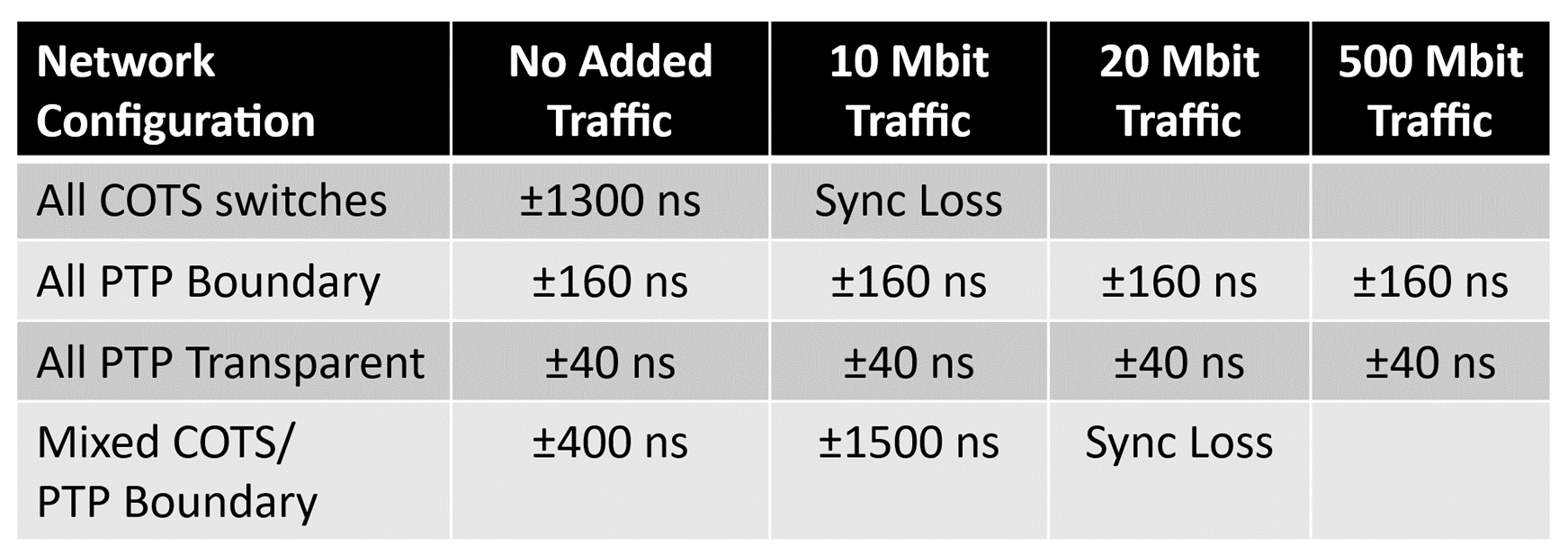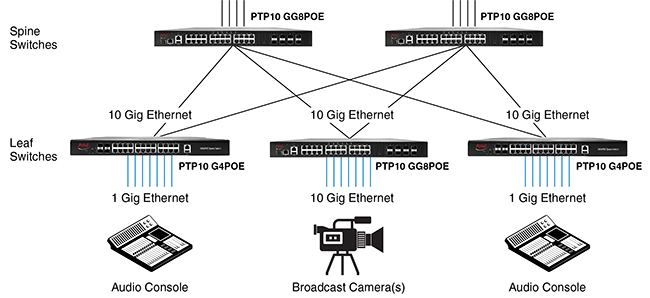PTP Ethernet Switches enable SMPTE 2110 and IP-based Workflows for Mission Critical AV-Over-IP deployments.


Using Office Grade or COTS (Commercial off the Shelf), non-PTP Switches, results in a loss of synchronization, with as little as 10Mbps of traffic on the network.


Many
organizations attempt to deploy Audio over IP and AV over IP using standard ethernet
infrastructure. But office-grade
ethernet switches are not recommended for most professional audio and video over
IP applications. In fact, SMPTE 2110
requires PTP Ethernet Switches that support other key features such as multicast.
ST-2110 relies on PTP to synchronize
audio and video streams and multicast to efficiently distribute video streams. Almost all AVoIP standards, including SDVoE, NDI,
Dante, AES67, and even proprietary protocols such as Crestron DM NVX benefit tremendously from Ethernet Infrastructure
designed for multi-media workflows.
Precision Time Protocol (PTP) plays a central role in standards-based IP media transport, typically AES67 audio and SMPTE ST2110 video. PTP data is critical because it provides timing information needed to synchronize devices to a shared clock across IP networks. When switches are not PTP-aware, they don’t participate in the delay corrections called by the protocol, compromising the accuracy of the downstream clocks.
In handling PTP messages, a PTP-aware switch should give you the option of using transparent and boundary clocks. Both are used to distribute PTP messages properly to multiple devices, and you’ll often find both at work across different layers of the PTP clock hierarchy when it’s necessary to keep many devices synchronized. Beyond correcting for the transit time of PTP messages across the switch, transparent clocks act as though they are invisible. Boundary clocks, on the other hand, may be synchronized to a PTP timing server on one port and serve as a timing server on all the other ports supporting a large groups of client devices, effectively taking some of the load off the timing server.
Bandwidth is also an issue. Each video stream can require 2-3 Gbps of bandwidth each, so switches need to be able to handle these bandwidths for ingest and aggregation (uplink/leaf/spine) switching. In some cases, 10 Gbps ports are needed for each connective device with 40 Gbps or 100 Gbps uplink ports.
And Managed Switches align best with the AV use-cases to support useful functions such as VLANs that separate and prioritize various traffic, protecting mission-critical media and data flows. Similarly, support of robust IGMP functionality allows the switch to receive multicast group memberships identifying the traffic that should be forwarded from a specific group to the client.
With quality of service (QoS) functionality, a switch can be configured to direct traffic (packets) with time-sensitive packets taking priority and, if specified, bandwidth constraints preventing unexpected traffic from interfering with the delivery of those packets.
If you’re moving toward IP-based media workflows, you will need a PTP Managed switch. Problem solved.
|
Company > Contact Us > About Patton > Jobs > Capabilities > Quality & Responsibility > Legal News & Events > Press Room/Releases > Training & Events > Library/Downloads |
| Sitemap |
Legal |
Privacy Policy |
Disclaimer |
![]()
![]()
![]()
![]()
![]()